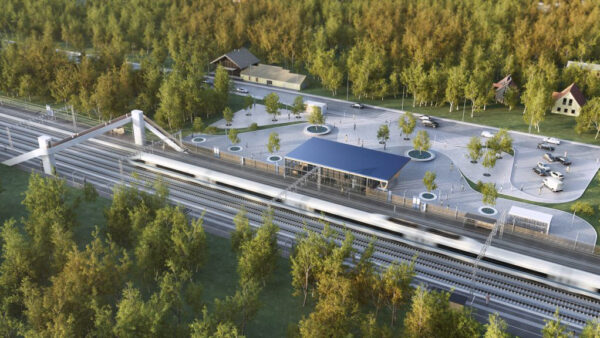Dubai-based luxury developer Damac is planning to create the Middle East’s first tropical rainforest, but the plan has been criticised for being “absolutely unsustainable”.
The “dense jungle environment” will be installed in a dome inside Damac’s Akoya Oxygen development (pictured), alongside a shopping and leisure centre.
The Dubai Rainforest will fit perfectly– Ziad El Chaar, managing director of Damac
Damac says it will be the first “green” luxury residential development in Dubai, measuring 55 million square feet and containing an luxury hotel, spa and an 18-hole golf course, the clubhouse of which will sit adjacent to the rainforest dome.Â
The rainforest is scheduled to be complete ahead of Dubai World Expo 2020.Â
The attraction is intended to be an educational experience for visitors, who will enter the dome at ground level before climbing into the canopy, learning about the rain forest flora and fauna as they go.

Damac’s Akoya Oxygen development (Damac)
They will also be able to “fly” through the canopy on a zip wire, climb a rock face and use a spa installed among the dome’s rock pools.  Â
Ziad El Chaar, the managing director of Damac, said: “The Dubai Rainforest will be a tropical wonderland, which tourists, residents and school groups can immerse themselves in and which will inspire a new generation.Â
“The Dubai Rainforest will fit perfectly into the ethos of Akoya Oxygen, the greenest community in Dubai, and provide a new space for education and cultural events which will raise awareness of this exciting ecosystem.” Â
Too much waterÂ
However, the plan has been criticised by Dr Ali El-Keblawy, associate professor of plant ecology at the University of Sharjah.

Damac’s Akoya Oxygen development (Damac)
He told GCR that he is against the idea of the Dubai Rainforest because it is “absolutely unsustainable”. El-Keblawy said it would be better to use native plants that require much less water to create a space to celebrate the natural heritage of the UAE. As examples he gave Ziziphus, Salvadora, and certain species of Acacia.Â
“These plants would grow very big (more than 10m height) if they receive 50% of the water that a rainforest would receive!” he said in an emailed statement. “It is easy that these local trees could establish mutualistic relationships with all soil micro-flora.”Â
Instead of a rainforest, El-Keblawy proposed a locally-themed garden with medicinal plants, plants from mountainous regions and even “Quranic plants” – plants with sacred connotations.










